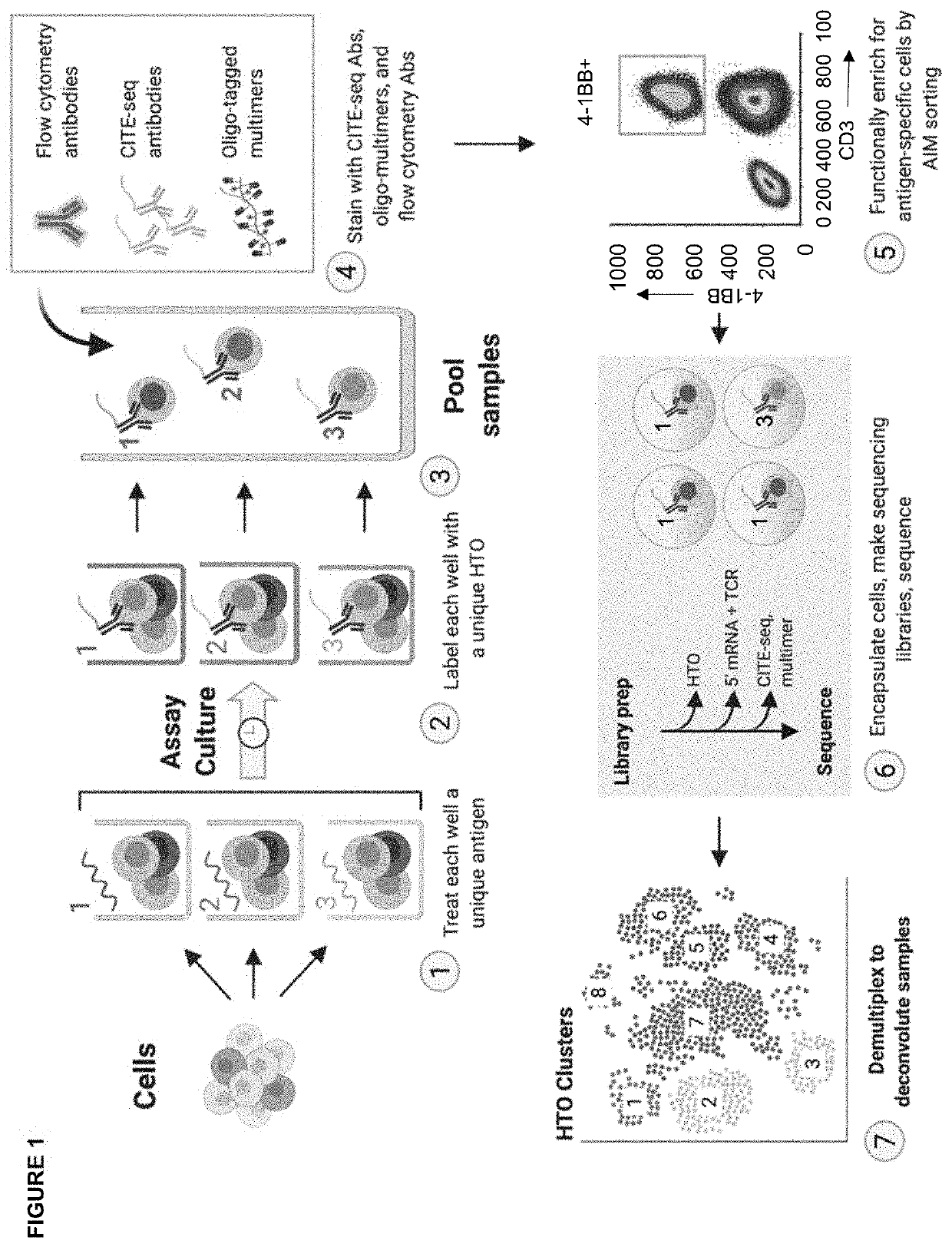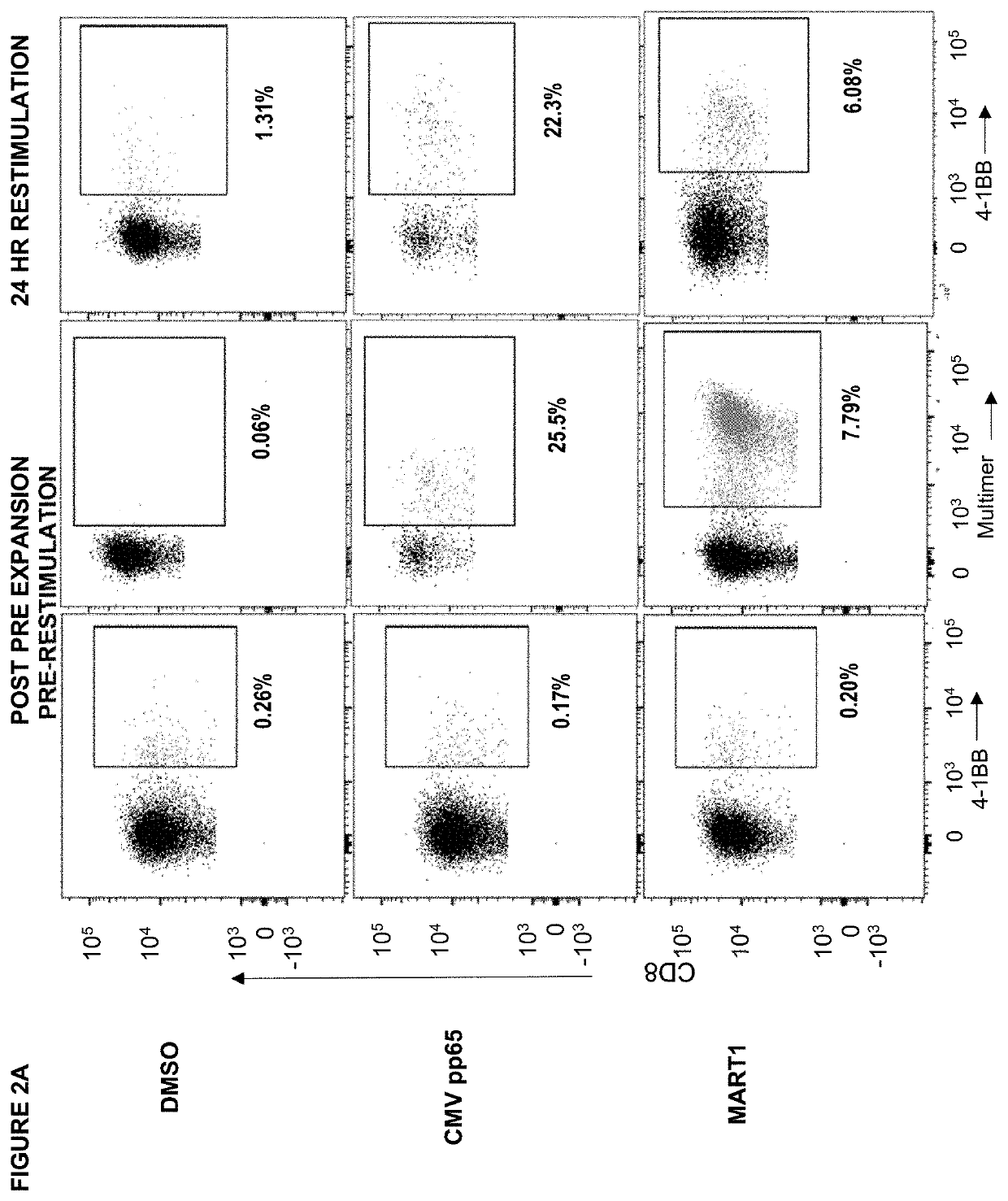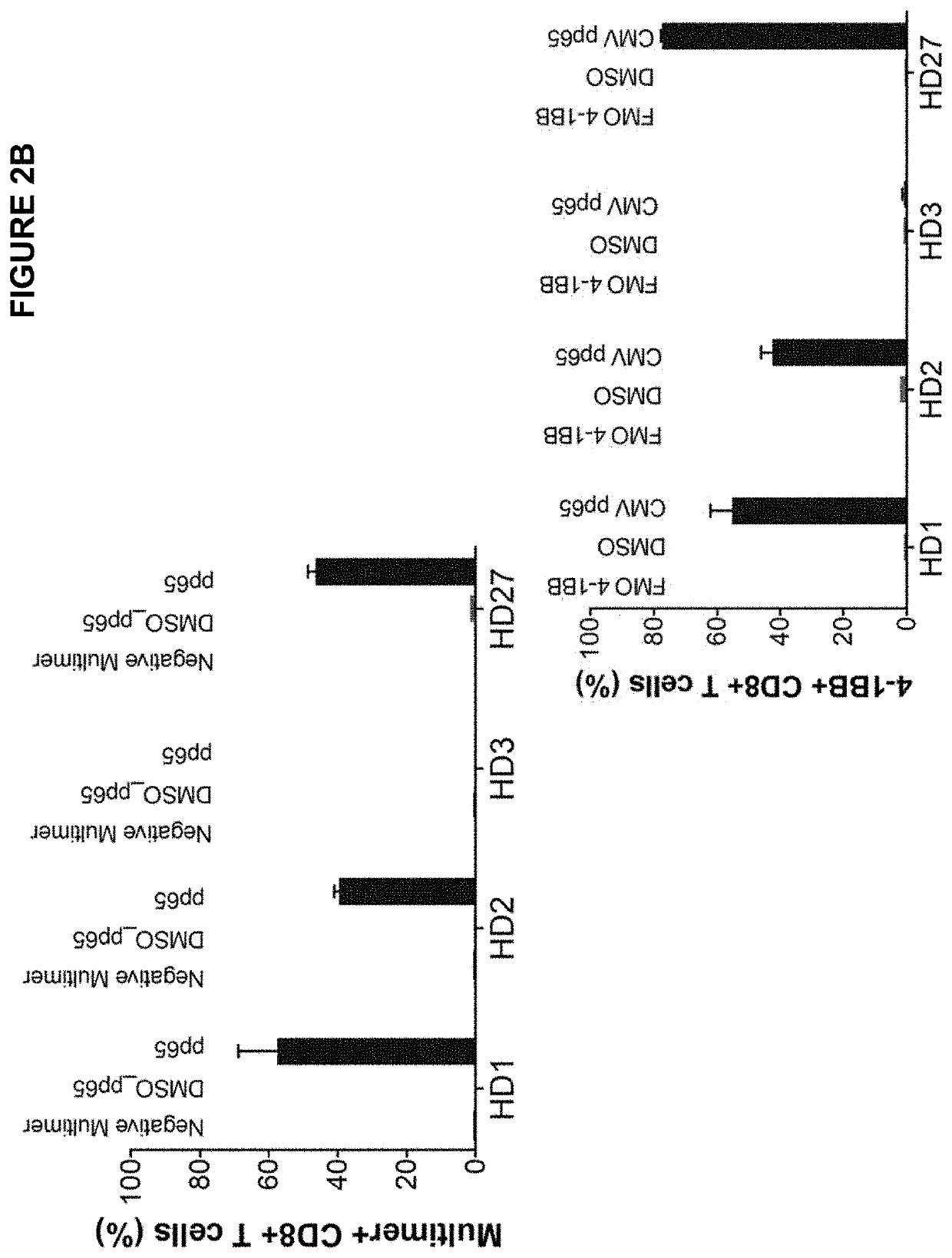High-throughput method to screen cognate T cell and epitope reactivities in primary human cells
a cognate t cell and epitope technology, applied in cell culture active agents, instruments, biochemistry apparatus and processes, etc., can solve the problems of large blood volume, difficult task, and high cost of individual hla haplotype-specific reagents (multimers)
- Summary
- Abstract
- Description
- Claims
- Application Information
AI Technical Summary
Benefits of technology
Problems solved by technology
Method used
Image
Examples
example 1
Identifying CD137 / 4-1BB as an Activation Induced Marker (AIM) that is Able to Functionally Identify Antigen-Specific T Cell Populations Comparable to Multimer Staining
[0272]Materials and Methods
[0273]Generally, in the methods described in this example, T cells from a healthy HLA-A*0201+human donor were pre-expanded in the presence of cognate synthetic peptides as per the methods described herein and then stained with fluorescently-tagged antibodies and dextramer multimers for flow cytometry analysis to identify antigen-specific T cell populations.
[0274]Results
[0275]In FIG. 2A dendritic cells (DCs) were derived from whole peripheral blood mononuclear cells (PBMC) from a healthy human donor. In brief, CD14+ monocytes were isolated from PBMC by magnetic selection using anti-CD14-magnetic beads (Miltenyi). The CD14+ cells were cultured for 5 days in CellGenix CellGro DC media supplemented with IL-4 and GM-CSF. On day five, DCs were pulsed with CMV pp65 (NLVPMVATV; SEQ ID NO:16), or MART...
example 2
Characterizing Cognate T Cell and Epitope Reactivities in Primary Human Cells Using Hashtag Oligonucleotides and CD137 / 4-1BB Enrichment of Activated T Cells
[0281]To further validate hashing, AIM sorting and / or single cell sequencing analysis as a viable method to evaluate and characterize cognate antigen and TCR reactivities, unique biological samples comprising PBMCs and unique viral peptides were hashed with hashtag oligonucleotides conjugated anti-CD2 antibodies and pooled. Functional activation was identified by CD137 / 4-1BB staining and use of CD137 / 4-1BB in a functional assay was compared to conventional functional assays of ELISPOT and dextramer staining.
[0282]Materials and Methods
[0283]ELISPOT: PBMCs from a healthy HLA-A*0201+human donor with known seropositivity to CMV, EBV, and Influenza were plated in a Dual Human IFNγ / GranzymeB FluoroSpot assays plate (ImmunoSpot, Cleveland, Ohio) at a concentration of 2×105 cell per well with DMSO or individual HLA-A*0201+-restricted vir...
example 3
Functional and Phenotypic Analysis of Antigen-Specific T Cells
[0293]Described herein is the use of hashing, AIM sorting, single cell sequencing, and CITE-seq antibody staining for the functional and phenotypic analysis of antigen-specific T cells performed directly on PBMCs, e.g., without a 7-10 day pre-expansion.
[0294]Materials and Methods
[0295]5′ Human TCR α / β with Cell Surface Antibody Staining: Cell Partitioning, Library Preparation, and Sequencing
[0296]Single cells suspended in PBS with 0.04% BSA were loaded on a Chromium Single Cell Instrument (10× Genomics). RNAseq, V(D)J, and antibody-derived-tag libraries were prepared using Chromium Single Cell 5′ Library, Gel Beads & Multiplex Kit (10× Genomics), with antibody-derived-tag primer addition. After amplification, cDNA was split into small (300 bp) fragment fractions. RNAseq and V(D)J libraries were prepared from the >300 bp fraction; cell surface antibody-derived libraries were prepared from the <300 bp fraction. To enrich th...
PUM
| Property | Measurement | Unit |
|---|---|---|
| Reactivity | aaaaa | aaaaa |
| Fluorescence | aaaaa | aaaaa |
Abstract
Description
Claims
Application Information
 Login to View More
Login to View More - R&D
- Intellectual Property
- Life Sciences
- Materials
- Tech Scout
- Unparalleled Data Quality
- Higher Quality Content
- 60% Fewer Hallucinations
Browse by: Latest US Patents, China's latest patents, Technical Efficacy Thesaurus, Application Domain, Technology Topic, Popular Technical Reports.
© 2025 PatSnap. All rights reserved.Legal|Privacy policy|Modern Slavery Act Transparency Statement|Sitemap|About US| Contact US: help@patsnap.com



